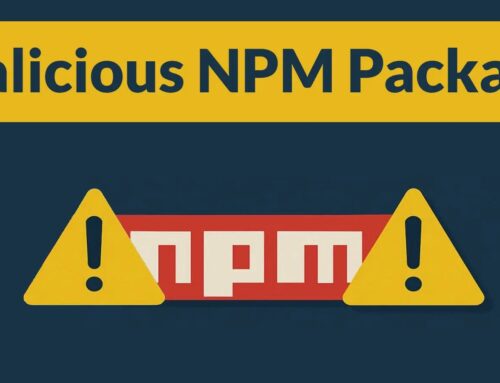
New Windows-Based Airstalk Malware Employs Multi-Threaded C2 Communication to Steal Logins
A new and alarming Windows malware family, dubbed Airstalk, has landed on the threat landscape, exhibiting a concerning blend of sophistication and stealth. This emerging threat is specifically designed to pilfer sensitive browser credentials, and what makes it particularly potent is its innovative use of multi-threaded command-and-control (C2) communication, coupled with the subversion of legitimate infrastructure. For cybersecurity professionals, understanding Airstalk’s mechanisms is paramount to effective defense.
Understanding Airstalk Malware’s Core Capabilities
Airstalk is not your average credential stealer. Its developers have equipped it with advanced features that allow it to operate covertly and efficiently. Key among these are:
- Multi-Threaded C2 Communication: Unlike many malware variants that rely on single-threaded communication, Airstalk leverages multiple threads for its C2 activities. This approach significantly enhances its resilience and speed, making it harder to detect and disrupt. Multi-threading allows the malware to send and receive data concurrently, potentially processing stolen information faster and maintaining persistent communication even if one thread is interrupted.
- PowerShell and .NET Variants: The existence of both PowerShell and .NET variants indicates a strategic choice by the attackers to maximize their attack surface and evade detection. PowerShell-based malware can often run filelessly, making forensic analysis more challenging, while .NET offers broad compatibility within Windows environments.
- Versioning: The malware family employs versioning, suggesting active development and continuous improvement by its creators. This commitment to updates means Airstalk will likely adapt to new security measures, posing an ongoing threat.
- Misuse of Legitimate MDM Infrastructure: Perhaps the most insidious aspect of Airstalk is its ability to hijack and exploit legitimate mobile device management (MDM) infrastructure, specifically mentioning AirWatch. By masquerading its C2 traffic within the expected communications of an MDM solution, Airstalk can blend in with normal network traffic, bypassing conventional security controls that might flag suspicious outbound connections. This tactic represents a significant challenge for network defenders.
How Airstalk Exfiltrates Browser Credentials
The primary objective of Airstalk is to steal browser credentials. The precise mechanisms for credential harvesting are not fully detailed in the available information, but typically, such malware employs techniques like:
- Process Injection: Injecting malicious code into legitimate browser processes to hook API calls that handle sensitive data.
- Local Storage Scraping: Accessing and exfiltrating data stored in browser profiles, which can include saved passwords, cookies, and autofill information.
- Form Grabbing: Intercepting data entered into web forms before it is encrypted and transmitted.
The innovation lies not just in what Airstalk steals, but how it sends that data out—through its robust, multi-threaded, and stealthy C2 channels, concealed within legitimate MDM traffic.
Remediation Actions and Protective Measures
Defending against advanced threats like Airstalk requires a multi-layered security strategy. Organizations should focus on proactive measures and incident response capabilities:
- Endpoint Detection and Response (EDR): Implement and continuously monitor EDR solutions capable of detecting unusual process behavior, anomalies in inter-process communication, and covert C2 activities. Look for indicators of PowerShell misuse or unusual .NET assembly executions.
- Network Traffic Analysis (NTA): Enhance network monitoring to identify suspicious patterns in outbound traffic, even when it appears to originate from legitimate sources like MDM solutions. Deep packet inspection and behavioral analysis can help flag deviations from typical MDM communication patterns.
- Principle of Least Privilege: Enforce strict adherence to the principle of least privilege for all user accounts and applications. Limiting the permissions of applications and users reduces the potential damage an infected system can inflict.
- Browser Security Best Practices: Encourage users to use strong, unique passwords for all online accounts and enable multi-factor authentication (MFA) wherever possible. Regularly review browser extensions and disable those not needed.
- Regular Security Audits and Penetration Testing: Conduct frequent security audits and penetration tests to identify potential vulnerabilities that Airstalk or similar malware could exploit.
- MDM Infrastructure Hardening: Secure MDM infrastructure rigorously. Ensure all MDM servers are patched, configured securely, and monitored for signs of compromise or misuse. Implement strong authentication for MDM administration.
- User Awareness Training: Educate employees about phishing attempts, social engineering tactics, and the dangers of downloading unofficial software or clicking on suspicious links. Many malware infections begin with an unwitting user action.
- Software Updates and Patching: Maintain a rigorous patching schedule for operating systems, browsers, and all installed applications to address known vulnerabilities.
Conclusion
The emergence of Airstalk malware underscores the evolving landscape of cyber threats. Its utilization of multi-threaded C2 communication and the sophisticated subversion of legitimate MDM infrastructure present a formidable challenge to organizational security. Proactive monitoring, robust endpoint and network security, stringent access controls, and comprehensive user education are critical in mitigating the risks posed by such advanced persistent threats. Remaining vigilant and adapting security strategies to counter these sophisticated techniques is essential for protecting sensitive data from novel attacks like Airstalk.





